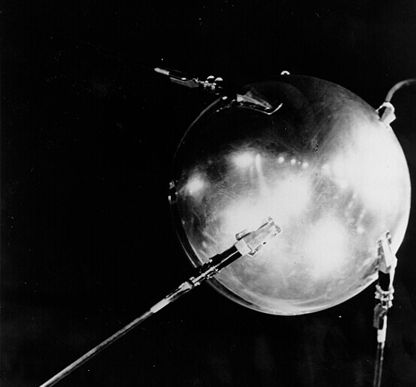Credit & Copyright: Courtesy
NASA History Office
Explanation:
Sputnik means "traveling companion".
Despite the innocuous
sounding name, the launch of the Earth's first "artificial moon",
Sputnik 1, by the Soviets on October 4, 1957
shocked the free world, setting in motion events which resulted in
the creation of NASA and
the race to the Moon.
Sputnik 1 was a 184 pound, 22 inch diameter sphere with four whip antennas
connected to battery powered transmitters.
The transmitters broadcast a continuous "beeping" signal to an
astounded earthbound audience for 23 days.
A short month later, on November 3, the Soviet Union followed this success by
launching a dog into
orbit aboard Sputnik 2.
Authors & editors:
Robert Nemiroff
(MTU) &
Jerry Bonnell
(USRA)
NASA Web Site Statements, Warnings,
and Disclaimers
NASA Official: Jay Norris.
Specific
rights apply.
A service of:
LHEA at
NASA /
GSFC
& Michigan Tech. U.
Based on Astronomy Picture
Of the Day
